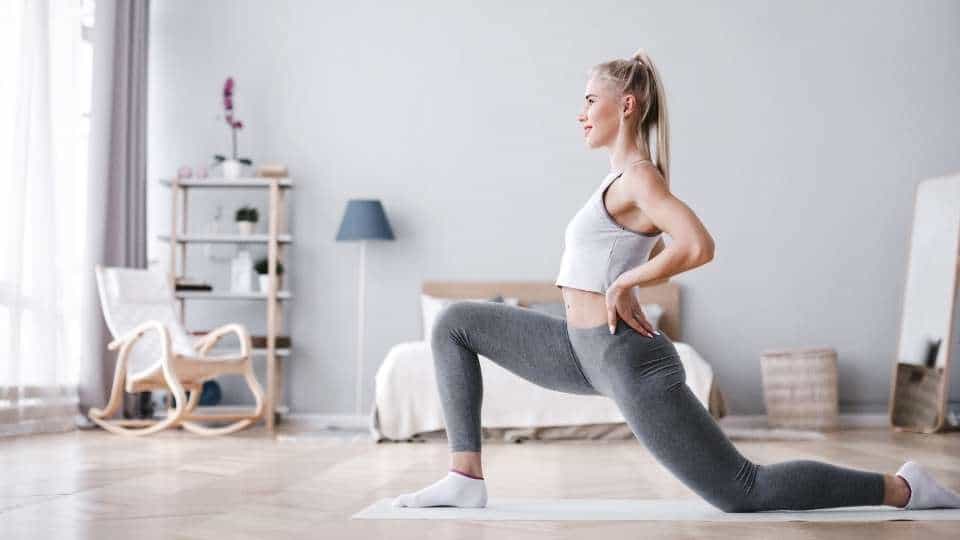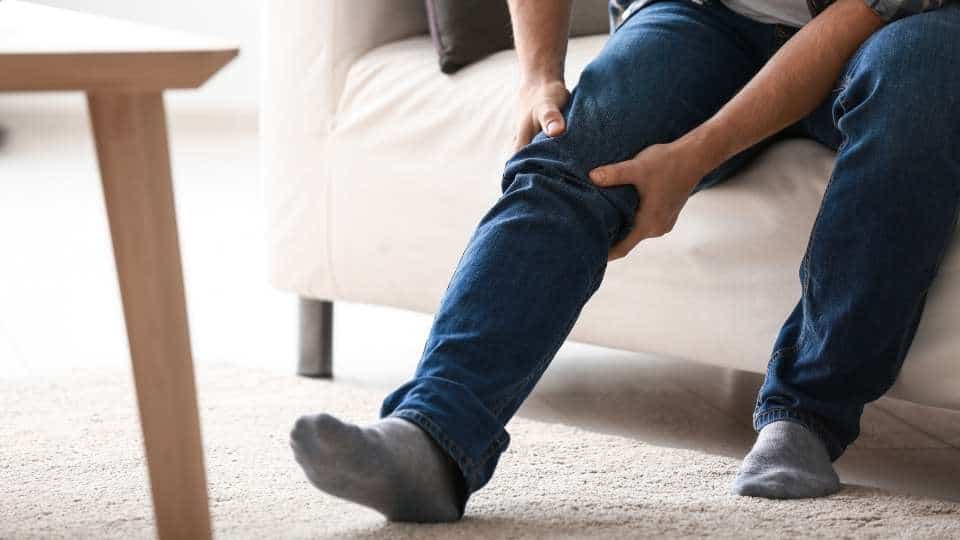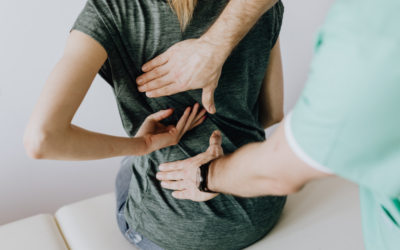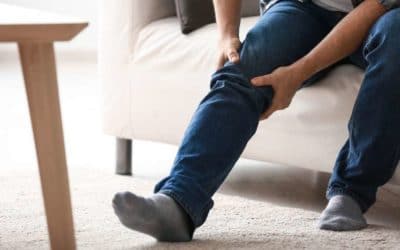Can Sitting a Lot Cause Weak Legs?
Our bodies aren’t designed to sit for long durations, and that’s why most of us experience pain while doing it. Needless to say, the further we progress into the future, the more we’re found sitting at work, with friends, or even at home. This brings us to this question, can sitting a lot cause weak legs?
As a general rule, sitting for long periods of time can cause adverse effects on your waist, which are the leading cause of weak legs. When you sit a lot, your hips can become weaker because they’re less active. From this, gravity wins, and your legs collapse inwards, putting pressure on your kneecaps and feet.
All Day Comfort & Support
Surprisingly, the primary causes of leg weakness or pain develop from the waist. This is because your hips are the most central part of your body, and it helps you use your legs to maintain stability. However, when your hips are weaker, your legs aren’t used as much. From this, over time your legs will become progressively weaker.
As someone who has designed solutions for weak legs from sitting (and treated people who had weak legs!), let me explain why this article will make you more comfortable, so, please read on.
How to Reduce Leg Weakness Caused by Sitting
I guess that if you’re searching this query, then you’re probably experiencing weaker legs from sitting. If that’s the case, you’ll want to become knowledgeable on the prevention methods below. Here, we detail how to correct your posture and various stretches to reduce leg weakness that’s caused by sitting.
Black Friday: 35% Off Today
Typical Delivery 1-3 Days
Posture
I can’t be obsessive enough about how important good posture is to reduce leg weakness, aches, and pains while sitting. Some things you’ll want to consider while setting up good posture for your legs while sitting are below:

- Lay your feet flat on the floor – Some people miscomprehend the importance of doing this, but it’s something you should most definitely implement. I tell you to lay your feet flat on the floor because it helps with distributing the weight across your hips.
Note – to make this more comfortable, consider taking your shoes off. Also, if you cannot reach the floor, I recommend you invest in an adjustable ergonomic footrest. Most available on the market, you can adjust their height and angle for optimal comfort.
All Day Comfort & Support
- Bend your knees – Additionally to the above, you’ll want to bend your knees at a 90-degree angle. This is the most comfortable and most minor straining position you can put your knees in, which reduces the effects sitting can have on them. From doing this, you’ll also be able to lay your feet flatter, meaning you’re taking more pressure off the hips when sitting.
- Adjust your chair – If you have an adjustable chair, that’s great. Ideally, you don’t want your legs hanging or overextending to lay your feet flat on the floor. Therefore, adjust your seat height until you find a position where you can comfortably rest your feet.
Without a doubt, implementing the above will help reduce the chances of your legs becoming weaker while sitting. However, it would help to implement the below stretches to boost leg strength, including the above posture corrections.
Stretches

I’m sure you’ve all heard the expression, “if you don’t use them, you lose them”, and it’s very accurate in this instance. Because of this, if you’re sitting down every day for long durations, it’s recommended to implement some daily leg stretches into your life. These stretches don’t have to be strenuous and most certainly don’t require any equipment. To understand which stretches are effective, see the below.
Leg Swings
When performing leg swings, there are two different variations: front to back and side to side. Ideally, you should perform each as they’re a superb stretching exercise to loosen up your hamstrings, glutes, and most importantly, hips.
Execute a front-to-back leg swing, it’s as simple as it sounds. First, find something you can hold for balance, and begin swinging your right leg back and forth as far as you can comfortably go. Approximately perform around 20 swings each leg before heading over to the side to sides.
Now, side-to-side swing follows the same concept, just a different angle. Again, find something to balance yourself on, and swing your right leg side to side as high as you possibly can. Same as the above, perform around 20 on each leg.
Note, if you still feel tight after performing leg swings, consider doing an additional 20.
Black Friday: 35% Off Today
Typical Delivery 1-3 Days
Fire Hydrants
Including the above, you should consider implementing fire hydrants. As debatable as they may look, there superb at activating your glutes and relieving pressure from your hips.
Funny enough, a fire hydrant resembles a dog peeing on a fire hydrant. This is how you’re able to achieve this stretch.
First, get on all fours with your palms and knees on the floor. To position yourself, your hips should be around shoulder-width apart. When you’re in this position, you’ll then want to raise one knee sideways. Try and go as high as you can while remaining your spine straight. A good repetition to achieve is around 15 to 20 on each leg.
Grok Squat
A grok squat is something only some people will be able to achieve as it requires more leg strength and stability than the above.
It’s a superb stretch, and it doesn’t just stretch your glutes and activate your hips, but it also makes your leg muscles a lot stronger. To perform this, consider following the below tips:
The grok squat is exceptionally similar to the catcher’s stance in baseball. You’ll simply want to squat down into a position so that your buttocks are touching the back of your hamstrings. However, instead of forcing yourself back up, you’ll want to hold that position for around 30 to 60 seconds. You should feel your groin, lower back, Achilles, quads, and hamstrings all stretching in this position.
From doing the above stretches daily, both your joints and muscles will thank you forever.
After reading, you should now be aware that sitting can cause your legs to become weaker over time. However, additionally to this, you now understand some posture corrections and stretches you can implement into your daily life to decrease the chances of your legs becoming hugely weakened.
Adapt Your Chair
Seat wedges are the perfect solution if you want to keep your posture in check while sitting at your desk. Not only are they comfortable and great for relieving pressure on areas such as hips and knees, but they also help to keep a good posture. Seat wedges gently push the pelvis forward, aligning your upper body to sit upright, which is especially beneficial if you tend to slouch in your chair a lot.
Perhaps most importantly, seat wedges engage core stability – something that will not only make sure good postural alignment can be maintained throughout the day but also reduce back pain derived from long hours of sitting. The combination of comfort and potential health benefits makes a seat wedge an ideal purchase for anyone who spends most of their time seated!
In my experience, the best seat wedge cushion is made from natural latex foam with 2 layers (soft top and firm base) for ultimate comfort. I never recommend memory or PU foams because they typically lack support and can be made from toxic materials.
Takeaway
I’ve established that sitting for long periods of time is bad, but can it also lead to weak legs? It does not seem like a stretch to say so. So what are the ways you can avoid this from happening? There are plenty of options available.
For starters, try standing up every once in a while during your day or even take some breaks at work and walk around if possible. If you have trouble getting out of your chair when you first stand up, give yourself a minute before doing anything else because there’s been evidence that shows people who do this report less back pain than those who don’t wait. Another option would be to use assistive devices such as a well-designed seat wedge.
Sources
- Black, Kathleen M., Philip McClure, and Marcia Polansky. “The influence of different sitting positions on cervical and lumbar posture.” Spine 21.1 (1996): 65-70.
- Purser, Jama L., et al. “Trajectories of leg strength and gait speed among sedentary older adults: longitudinal pattern of dose response.” The Journals of Gerontology Series A: Biological Sciences and Medical Sciences 58.12 (2003): M1125-M1134.
- Willson, John D., Mary Lloyd Ireland, and Irene Davis. “Core strength and lower extremity alignment during single leg squats.” Medicine & Science in Sports & Exercise 38.5 (2006): 945-952.






